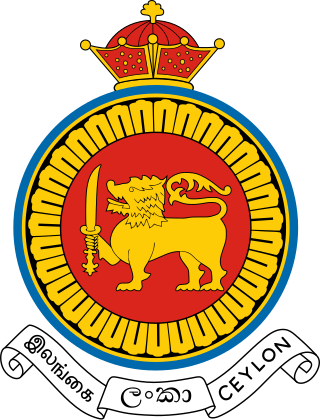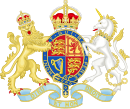
The Statute of Westminster 1931 is an act of the Parliament of the United Kingdom that sets the basis for the relationship between the Dominions and the Crown.

The Bill of Rights 1689 is an Act of the Parliament of England that set out certain basic civil rights and clarified who would be next to inherit the Crown. It remains a crucial statute in English constitutional law.

The monarchy of the United Kingdom, commonly referred to as the British monarchy, is the form of government used by the United Kingdom by which a hereditary monarch reigns as the head of state, with their powers regulated by the British Constitution. The term may also refer to the role of the royal family within the UK's broader political structure. The current monarch is King Charles III, who ascended the throne on 8 September 2022, upon the death of his mother, Queen Elizabeth II.

Governor-general, or governor general, is the title of an office-holder. In the context of governors-general and former British colonies, governors-general are appointed as viceroy to represent the monarch of a personal union in any sovereign state over which the monarch does not normally reign in person. Governors-general have also previously been appointed in respect of major colonial states or other territories held by either a monarchy or republic, such as Japan in Korea and Taiwan and France in Indochina.

Monarchical systems of government have existed in Ireland from ancient times. In most of Ireland, this continued until 1949, when it transitioned to being the Republic of Ireland. Northern Ireland, as part of the United Kingdom, remains under a monarchical system of government.

A Commonwealth realm is a sovereign state that has Charles III as its monarch and ceremonial head of state. All the realms are equal with and independent of the others, though one person, resident in the United Kingdom, acts as monarch of each. The phrase Commonwealth realm is an informal description not used in any law.

Emperor or Empress of India was a title used by British monarchs from 1 May 1876 to 22 June 1948 to signify their sovereignty over the Indian Empire as its imperial head of state. The image of the emperor or empress appeared on Indian currency, in government buildings, railway stations, courts, on statues etc. Oaths of allegiance were made to the emperor or empress and the lawful successors by the governors-general, princes, governors, commissioners in India in events such as imperial durbars.
The style and title of the Canadian sovereign is the formal mode of address of the monarch of Canada. The form is based on those that were inherited from the United Kingdom and France, used in the colonies to refer to the reigning monarch in Europe. As various Canadian territories changed ownership and then the country gradually gained independence, the style and title of the monarchs changed almost as often as the kings and queens themselves. The mode of address currently employed is a combination of a style that originates in the early 17th century and a title established by Canadian law in 2024.

The Dominion of New Zealand was the historical successor to the Colony of New Zealand. It was a constitutional monarchy with a high level of self-government within the British Empire.
The Executive Council was the cabinet and de facto executive branch of government of the 1922–1937 Irish Free State. Formally, executive power was vested in the Governor-General on behalf of the King. In practice, however, it was the Council that governed, since the Governor-General was bound to act on its advice. The Executive Council included a prime minister called the President of the Executive Council and a deputy prime minister called the Vice-President. A member of the Council was called an executive minister, as distinct from an extern minister who had charge of a department without being in the Council.
A Royal Style and Titles Act, or a Royal Titles Act, is an act of parliament passed in the relevant country that defines the formal title for the sovereign as monarch of that country. This practice began in 1876, when the Parliament of the United Kingdom passed the Royal Titles Act. By that law, and the subsequent Royal Titles Act 1901 and Royal and Parliamentary Titles Act 1927, the monarch held one title throughout the British Empire. Following the enactment of the Statute of Westminster 1931, the governments of the now separate and independent realms sharing one person as sovereign agreed in 1949 that each should adopt its own royal style and title, which was done in 1952. As colonies became new realms, they passed their own royal style and titles acts. Most of the laws were created during the reign of Queen Elizabeth II.
The precise style of the British sovereign has varied over the years. It is chosen and officially proclaimed by the sovereign. In 2022, King Charles III was proclaimed by the Privy Council to have acceded to the throne with the style:
Charles the Third, by the Grace of God of the United Kingdom of Great Britain and Northern Ireland and of His other Realms and Territories King, Head of the Commonwealth, Defender of the Faith

From 1910 to 1961 the Union of South Africa was a self-governing country that shared a monarch with the United Kingdom and other Dominions of the British Empire. The monarch's constitutional roles were mostly delegated to the Governor-General of the Union of South Africa.

The state known today as Ireland is the successor state to the Irish Free State, which existed from December 1922 to December 1937. At its foundation, the Irish Free State was, in accordance with its constitution and the terms of the Anglo-Irish Treaty, governed as a constitutional monarchy, in personal union with the monarchy of the United Kingdom and other members of what was then called the British Commonwealth. The monarch as head of state was represented in the Irish Free State by his Governor-General, who performed most of the monarch's duties based on the advice of elected Irish officials.

The Statute of Westminster Adoption Act 1942 is an act of the Australian Parliament that formally adopted sections 2–6 of the Statute of Westminster 1931, an Act of the Parliament of the United Kingdom enabling the total legislative independence of the various self-governing Dominions of the British Empire. With its enactment, Westminster relinquished nearly all of its authority to legislate for the Dominions, effectively making them de jure sovereign nations.

The monarchy of Australia is a key component of Australia's form of government, embodied by the Australian sovereign and head of state. The Australian monarchy is a constitutional one, modelled on the Westminster system of parliamentary government, while incorporating features unique to the constitution of Australia.
Australia is a constitutional monarchy whose Sovereign also serves as Monarch of the United Kingdom, New Zealand, Canada and eleven other former dependencies of the United Kingdom including Papua New Guinea, which was formerly a dependency of Australia. These countries operate as independent nations, and are known as Commonwealth realms. The history of the Australian monarchy has involved a shifting relationship with both the monarch and also the British government.
The Constitutional history of Australia is the history of Australia's foundational legal principles. Australia's legal origins as a nation state began in the colonial era, with the reception of English law and the lack of any regard to existing Indigenous legal structures. As the colonies expanded, Australia gradually began to achieve de facto independence. Over the years as a result the foundations of the Australian legal system gradually began to shift. This culminated in the Australia Act, an act formally ending legal ties with the UK.
A dominion was any of several largely self-governing countries of the British Empire. Progressing from colonies, their degrees of colonial self-governance increased unevenly over the late 19th century through the 1930s, and some vestiges of empire lasted in some areas into the late 20th century. With the evolution of the British Empire into the Commonwealth of Nations, finalised in 1949, the dominions became independent states, either as Commonwealth republics or Commonwealth realms.

The Royal Titles Act 1953 was an act of the Parliament of Ceylon which altered the monarch's title in Ceylon.













